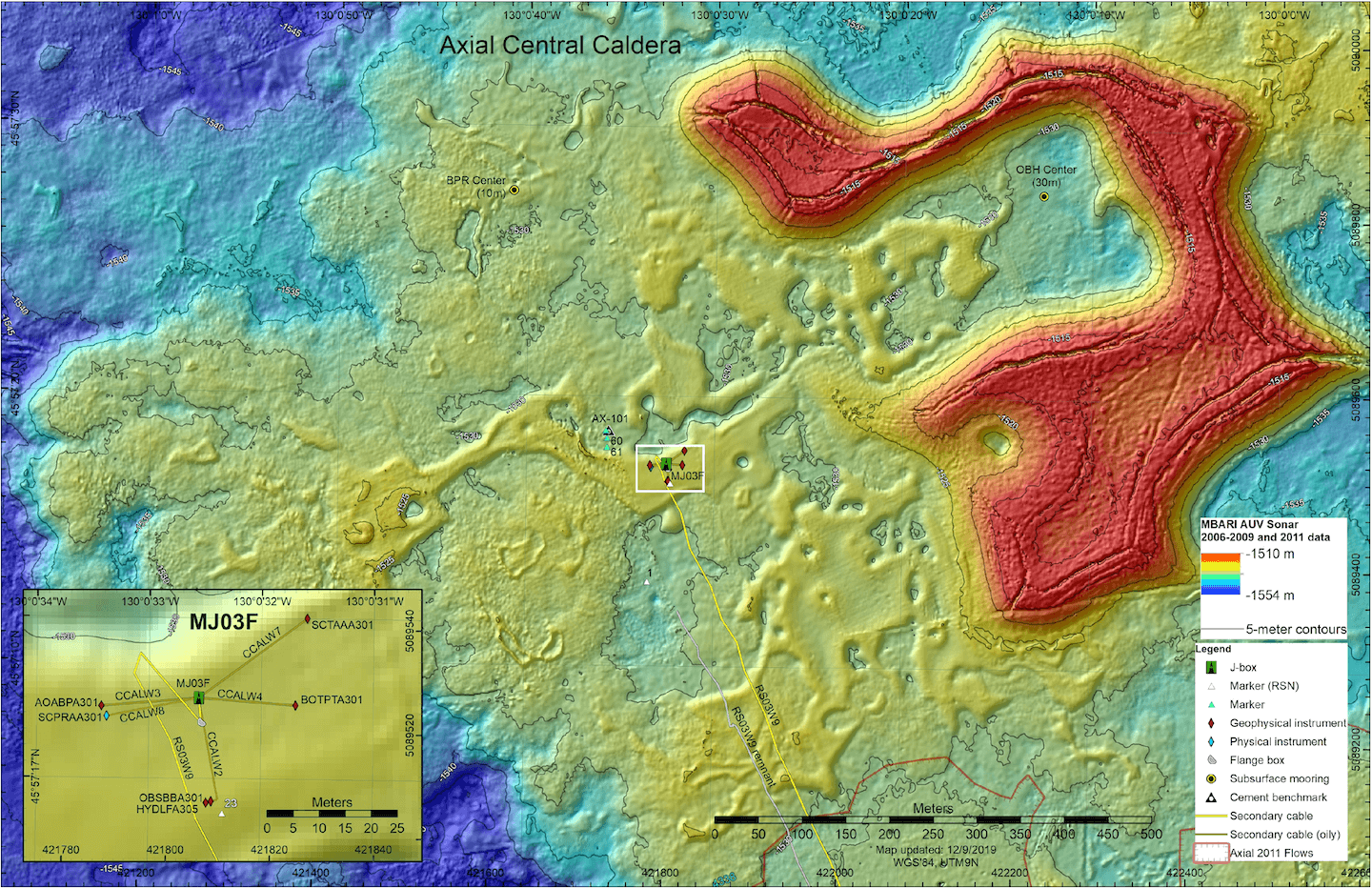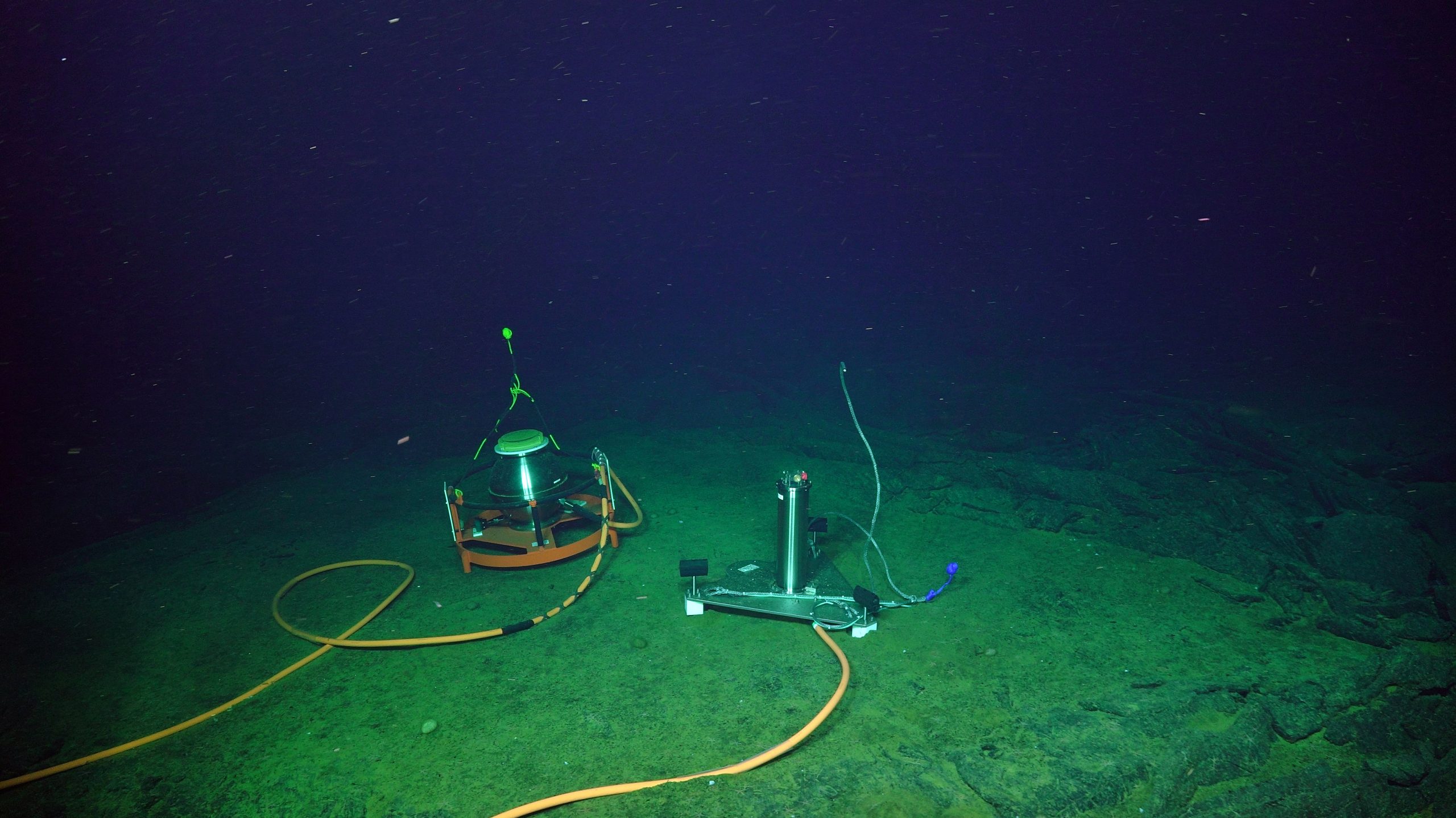A-0-A Calibrated Pressure Instrument

The A-0-A calibrated pressure instrument was developed by Dr. William Wilcock, School of Oceanography, University of Washington (UW) and UW Applied Physics Laboratory engineer Dana Manalang, with funding from the National Science Foundation’s Office of Technology and Interdisciplinary Coordination (OTIC) through award “Developing a new calibrated pressure sensor for the Ocean Observatories Initiative Cabled Array and other applications”. The instrument was installed in 2019 (VISIONS’19)on the Ocean Observatories Initiative Cabled Array at the Central Caldera site on Axial Seamount to measure deformation at the volcanoes summit (inflation and deflation). The A-0-A method is a new approach to calibrating pressure sensors to remove drift. Periodically a valve is used to switch the pressure sensor for a short interval from measuring the pressure in the ocean to measuring the pressure inside the instrument housing. The drift can then be determined by comparing the pressure readings to an accurate barometer.
This A-0-A instrument includes two Paroscientific model 44.4K-302 pressure transducers (SN136580 is designated P1 and SN136580 is designated P2), a Paroscientific model 216B-102 barometer, a thermistor temperature sensor, and electronics manufactured by RBR and integrated by the UW-APL. A Valco high-performance liquid chromatography valve is connected to the two pressure transducers and enables switching between the external pressure and the internal pressure of the instrument housing. The pressure transducers normally monitor the external ocean pressure except for short five-minute intervals when they are connected to the internal pressure of instrument housing by for drift calibration against the barometer. The pressure transducers and barometer each includes stressed and unstressed quartz crystals whose oscillation periods constrain pressure ported into the sensor and temperature within the sensor. The thermistor measures temperature within the instrument housing and is included to understand whether heat dissipation within the instrument was driving convection.
Future applications of this cabled sensor may include vertical geodetic studies of the Cascadia subduction zone megathrust aimed at understanding patterns of fault locking, creep and slow slip.
Access A0ABPA301 Data

